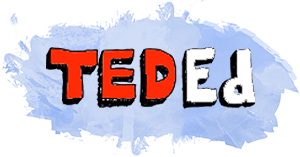Bloom’s Taxonomy is a teaching framework that classifies learning from lower order to higher order thinking.
REMEMBERING > UNDERSTANDING > APPLYING > ANALYZING > EVALUATING > CREATING
So to put it simply, remembering is the most basic part of the learning process and creating something entirely new from what has been learnt, is the most complex.

Technology or pedagogy?
I would argue that technology is not the tool that makes children creative, instead it is a support. The learning is the priority when planning lessons; the technology is merely a dynamic aid.
“Teachers need to integrate technology seamlessly into lessons instead of viewing it as an add-on or afterthought.” – Heidi-Hayes Jacobs.
I have seen all too many times, when setting a project, students remembering some facts but then merely copying and pasting information, altering a few words here and there. When challenged, they can recall some facts but they do not understand what they have said or the background information.

Image courtesy of thefeedingdoctor.com
So can technology support higher order thinking?
I would say YES it can SUPPORT and even ENCOURAGE higher order thinking.
Here’s a break down of Bloom’s taxonomy and some ideas of where tech can help:
Understanding
Try using TED-ED talk videos or inspirational YouTube clips (flipping your classroom is a great way to do this style of learning). Students can find them by themselves or they can be directed to them by the teacher. Here’s the important bit: making sure they have understood. Ensure that after the video has been watched, they have a task or a challenge to complete so that they engage.

Applying
To apply learnt knowledge, set the pupils some project based learning (click here to see my article on this). Ask them to work on Google Docs so that you can guide them through comments and feedback and encourage application of knowledge.
![]()
Analysing
For analysis, try presenting students with data. Show them ways of analysing it. A good tech tool to support this would be graphing software. This would not analyse the data for them, however it would help them see results it in different formats, making analysis easier to carry out. Again, when the students present their results, question them and play the devil’s advocate – really make them think about whether there is only one ‘correct answer’.

Evaluating
How can tech help with evaluation? I would suggest presentation software is an effective way because it is great for structuring and exploring the evaluation of a project or challenge. Students still need to be guided to present their assessments clearly and thoughtfully, interrogating each point with vigour. Furthermore, videoing evaluations is an interesting strategy, because pupils can watch themselves back and increase the scrutiny of their self-evaluation (click here to see my article on this).
Creating
This is where I feel technology is incredible useful – creating new content from what has already been learnt. There are hundreds of apps, websites and programs which can support. They won’t come up with an initial idea, but they can be used to build, scaffold and construct it.

Image courtesy of sylviachanart.com
Can you think of other ways technology can support higher order thinking? Let me know by commenting below.



1 Comments